|
|
|
Oxford University Press
|
Is today's language at an all-time low? Edwin Battistella argues that it is wrong to think of slang, regional dialects and nonstandard grammar as simply breaking the rules of good English. Reexamining debates over relativism in language, Battistella argues that we should view language as made up of alternative forms of regularity and orderliness, which require informed engagement with usage. |
|
Expressivism — the sophisticated contemporary incarnation of the noncognitivist research program of Ayer, Stevenson, and Hare — is no longer the province of metaethicists alone. Its comprehensive view about the nature of both normative language and normative thought has also recently been applied to many topics elsewhere in philosophy — including logic, probability, mental and linguistic content, knowledge, epistemic modals, belief, the a priori, and even quantifiers. Yet the semantic commitments of expressivism are still poorly understood and have not been very far developed. As argued within, expressivists have not yet even managed to solve the 'negation problem' — to explain why atomic normative sentences are inconsistent with their negations. As a result, it is far from clear that expressivism even could be true, let alone whether it is. Being For seeks to evaluate the semantic commitments of expressivism, by showing how an expressivist semantics would work, what it can do, and what kind of assumptions would be required, in order for it to do it. Building on a highly general understanding of the basic ideas of expressivism, it argues that expressivists can solve the negation problem — but only in one kind of way. It shows how this insight paves the way for an explanatorily powerful, constructive expressivist semantics, which solves many of what have been taken to be the deepest problems for expressivism. But it also argues that no account with these advantages can be generalized to deal with constructions like tense, modals, or binary quantifiers. Expressivism, the book argues, is coherent and interesting, but false. |
|
For most lawyers, effective client counseling is neither intuitive nor easy. Lawyers tend to avoid or delay communicating bad news out of a fear of client backlash, or because they feel torn between the obligation to clearly inform clients about weaknesses in legal positions and fear of damaging the client relationship. There is a perception that honest advice from a lawyer can make a client doubt the allegiance and zeal brought to a particular legal matter. Client Science helps lawyers to effectively communicate with their clients, particularly when delivering bad news or other legal realities. Author, Marjorie Corman Aaron, explains the applicable social sciences and translates insights from these fields into plain language to help improve a lawyer's ordering, timing, phrasing, and type of explanation, as well as style adjustments for the lawyer's voice, gesture, and body position. Ultimately, she demonstrates how the proverbial well-informed client--meaning a client who fully understands and appreciates the lawyer's information and advice — can also be a satisfied client who trusts the lawyer's competence and loyalty. |
|
This lively and far-reaching account of the politics, religion, and culture of England in the century and a half after the Norman Conquest provides a vivid picture of everyday existence, and increases our understanding of all aspects of medieval society. This was a period in which the ruling dynasty and military aristocracy were deeply enmeshed with the politics and culture of France. Professor Bartlett describes their conflicts, and their preoccupations — the sense of honour, the role of violence, and the glitter of tournament, heraldry, and Arthurian romance. He explores the mechanics of government; assesses the role of the Church at a time of radical developments in religious life and organization; and investigates the peasant economy, the foundation of this society, and the growing urban and commercial activity. There are colourful details of the everyday life of ordinary men and women, with their views on the past, on sexuality, on animals, on death, the undead, and the occult. The result is a fascinating and comprehensive portrayal of a period which begins with conquest and ends in assimilation. |
|
Are leaders born or made? Does each society get the leaders it deserves? How-and why-is leadership 'rhetoric' different from leadership in reality? l l Leadership is one of the most talked about yet least understood concepts in current business and society. This book explores how theoretical models and views of leadership have evolved over time; how leadership can be investigated from individual, organizational, and societal perspectives; and perennial dilemmas and emerging approaches in Leadership Studies. Positioning its discussion within a multidisciplinary framework that touches on management, sociology, philosophy, anthropology, history, literature, and politics, this book examines and critiques the common assumptions that inform the ways in which leaders and leadership are recognized, rewarded, and developed. It provides a valuable and thought-provoking overview for students and academics interested in leadership and management, practising leaders, leadership development consultants, and policy makers. |
|
From the late imperial period until 1922, the British and French made private and government loans to Russia, making it the foremost international debtor country in pre-World War I Europe. To finance the modernization of industry, the construction of public works projects, the building of railroads, and the development of the military-industrial complex, Russia's ministers of finance, municipal leaders, and nascent manufacturing class turned, time and time again, to foreign capital. From the forging of the Franco-Russian alliance onwards, Russia's needs were met, first and foremost, by France and Great Britain, its allies, and diplomatic partners in the developing Triple Entente. Russia's continued access to those ready lenders ensured that the empire of the Tsars would not be tempted away from its alliance and entente partners. This web of financial and political interdependence affected both foreign policy and domestic society in all three countries. The Russian state was so heavily indebted to its western creditors, rendering those western economies almost prisoners to this debt, that the debtor nation in many ways had the upper hand; the Russian government at times was actually able to dictate policy to its French and British counterparts. Those nations' investing classes-which, in France in particular, spanned not only the upper classes but the middle, rentier class, as well-had such a vast proportion of their savings wrapped up in Russian bonds that any default would have been catastrophic for their own economies. That default came not long after the Bolshevik Revolution brought to power a government who felt no responsibility, whatsoever, for the debts accrued by the tsars for the purpose of oppressing Russia's workers and peasants. The ensuing effect on allied morale, the Anglo-French relationship, and, ultimately, on international relations in the twentieth century, was grim and far-reaching. Jennifer Siegel narrates a classic tale of money and power in the modern era-an age of economic interconnectivity and great power interdependency-involving such figures as Lord Revelstoke, chairman of Baring Brothers, the British and French Rothschild cousins, and Sergei Witte, Russia's authoritative finance minister during much of this age of expansion. For Peace and Money highlights the importance of foreign capital in policymaking on the origins and conduct of World War I. |

|
Insular Books discusses literary texts written in Anglo-French, Middle English, Older Scots, and Middle Welsh. The particular focus of the collection is one type of manuscript: the miscellany — essentially a multi-text manuscript whose contents are of a varied nature, often accumulated over time and added by different users. |
|
Relationship Marketing has been written in a highly accessible way to ensure clear understanding and ignite the reader's interest. The author presents a critical overview of the subject to enable students to engage with issues, and discuss and debate points raised in the text. A wealth of case studies are included throughout allowing students to see how the theory may be transferred through to practice for example BMW Mini, Guiness and Metro. The text begins by looking at how and why relationship marketing originated, before exploring issues surrounding customer relationships. Consideration is given to topics such as customer satisfaction, retaining customers, customer loyalty, and customer relationship management. Part three discusses different types of relationships, such as e-relationships and supplier relationships, as well as considering both internal and external relationships. The text concludes with a section on the implications, both for organisations and for the future. |
|
This authoritative new textbook integrates the modern monetary framework, based on the 3-equation model of the demand side, the supply side and the policy maker, with a model of the financial system. As a result, the authors comprehensively address the limitations of the mainstream macroeconomic model exposed by the financial crisis and the Eurozone crisis. The book guides the reader through the three principal steps required to integrate the financial system within the macroeconomic model. Firstly, the authors examine how the margin of the lending rate over the policy rate is set in the commercial banking sector, how money is created in a modern banking system and how the central bank can take account of the working of the banking system in order to achieve its desired policy outcome. Secondly, the authors explore the characteristics of the financial system that result in vulnerability to a financial crisis, with implications for fiscal balance. The economy depends on the continuity of core banking services and governments cannot afford to let them fail. This means that important banks do not bear the full cost of their lending decisions. As a result, they may have an incentive to take on excessive risk. Thirdly, a simple model is developed of the behaviour of highly-leveraged financial institutions as the basis for a leverage or financial cycle in the economy. In addition, the book extends the 3-equation model to the open economy and uses a simple 2-bloc version of the 3-equation model to introduce global imbalances. The case of a common currency area is handled within the core model — both at the Eurozone level and at the level of member countries. Every chapter emphasises how the different actors in the economy behave and interact: what are they trying to achieve and what limits their ability to put their intentions into practice? This is extended to the modelling of growth, where the role of innovation rents in the Schumpeterian model is highlighted. It is essential that students understand previous periods of growth, stability and crisis in preparing for future shocks. With this in mind, the book enables the reader to interpret long run historical data and to compare institutional detail in different eras and across the world. Consequently, this text not only develops the critical thinking skills required for academic success, but ensures the reader can analyse data, trends, and policy debates with the confidence necessary for a career in economics or finance. As a result, it is essential reading for all those interested in learning more about the current macroeconomic system and the role played by financial institutions. Online Resource Centre: For students: Conduct a range of exercises with the closed and open economy versions of the model using the Excel-based macroeconomic simulator. Develop your understanding with additional technical material available in the accompanying web appendices. For registered lecturers: Access the solutions to end of chapter questions from the book. |
|
This book addresses a simple question: how do Russians understand international law? Is it the same understanding as in the West or is it in some ways different and if so, why? It answers these questions by drawing on from three different yet closely interconnected perspectives: history, theory, and recent state practice. The work uses comparative international law as starting point and argues that in order to understand post-Soviet Russia's state and scholarly approaches to international law, one should take into account the history of ideas in Russia. To an extent, Russian understandings of international law differ from what is considered the mainstream in the West. One specific feature of this book is that it goes inside the language of international law as it is spoken and discussed in post-Soviet Russia, especially the scholarly literature in the Russian language, and relates this literature to the history of international law as discipline in Russia. Recent state practice such as the annexation of Crimea in 2014, Russia's record in the UN Security Council, the jurisprudence of the European Court of Human Rights, prominent cases in investor-state arbitration, and the creation of the Eurasian Economic Union are laid out and discussed in the context of increasingly popular 'civilizational' ideas, the claim that Russia is a unique civilization and therefore not part of the West. The implications of this claim for the future of international law, its universality, and regionalism are discussed. |
|
Part of a series aimed at average and above-average ability Key Stage 3 National Curriculum pupils, this historical study of Blacks in the Americas covers the supplementary unit, using an investigatory approach. |
|
«Advanced Chemistry» breaks new ground for A-Level texts with revolutionary computer-generated graphics of molecules that will bring chemistry to life for your students. The authors have years of teaching experience between them, in both school and FE, and bring a refreshing approach to traditional A-Level material. With full mathematical support within 'Maths boxes' and at the end of the book, «Advanced Chemistry» will completely inspire and support chemistry students. The Key Points are: high quality diagrams that support the text; important terms highlighted; and graduated questions and practice.» |
|
How can one think about the same thing twice without knowing that it's the same thing? How can one think about nothing at all (for example Pegasus, the mythical flying horse)? Is thinking about oneself special? One could mistake one's car for someone else's, but it seems one could not mistake one's own headache for someone else's. Why not? R. M. Sainsbury and Michael Tye provide an entirely new theory — called 'originalism' — which provides simple and natural solutions to these puzzles and more. Originalism's central thesis is that concepts, the constituents of thoughts, are to be individuated by their origin, rather than epistemically or semantically. The doctrine has further valuable consequences for the nature of thought, our knowledge of our own thoughts, the nature of experience, the epistemology of perception-based beliefs, and for arguments based on conceivability. Sainsbury and Tye argue that although thought is special, there is no special mystery attaching to the nature of thought. Their account of the mind considers it as part of nature, as opposed to something with supernatural powers — which means that human beings have more opportunities to make mistakes than many have liked to think. |
|
Sticks and stones may break my bones but words will never hurt me. This schoolyard rhyme projects an invulnerability to verbal insults that sounds good but rings false. Indeed, the need for such a verse belies its own claims. For most of us, feeling insulted is a distressing-and distressingly common-experience. In Sticks and Stones, philosopher Jerome Neu probes the nature, purpose, and effects of insults, exploring how and why they humiliate, embarrass, infuriate, and wound us so deeply. What kind of injury is an insult? Is it determined by the insulter or the insulted? What does it reveal about the character of both parties as well as the character of society and its conventions? What role does insult play in social and legal life? When is telling the truth an insult? Neu draws upon a wealth of examples and anecdotes-as well as a range of views from Aristotle and Oliver Wendell Holmes to Oscar Wilde, John Wayne, Katharine Hepburn, and many others-to provide surprising answers to these questions. He shows that what we find insulting can reveal much about our ideas of character, honor, gender, the nature of speech acts, and social and legal conventions. He considers how insults, both intentional and unintentional, make themselves felt-in play, Freudian slips, insult humor, rituals, blasphemy, libel, slander, and hate speech. And he investigates the insult's extraordinary power, why it can so quickly destabilize our sense of self and threaten our moral identity, the very center of our self-respect and self-esteem. Entertaining, humorous, and deeply insightful, Sticks and Stones unpacks the fascinating dynamics of a phenomenon more often painfully experienced than clearly understood. |
|
Wittgenstein's philosophical career began in 1911 when he went to Cambridge to work with Russell. He compiled the Notes on Logic two years later as a kind of summary of the work he had done so far. Russell thought that they were as good as anything that has ever been done in logic, but he had Wittgenstein himself to explain them to him. Without the benefit of Wittgenstein's explanations, most later scholars have preferred to treat the Notes solely as an interpretative aid in understanding the Tractatus (which draws on them for material), rather than as a philosophical work in their own right. Michael Potter unequivocally demonstrates the philosophical and historical importance of the Notes for the first time. By teasing out the meaning of key passages, he shows how many of the most important insights in the Tractatus they contain. He discusses in detail how Wittgenstein arrived at these insights by thinking through ideas he obtained from Russell and Frege. And he uses a challenging blend of biography and philosophy to illuminate the methods Wittgenstein used in his work. The book features the complete text of the Notes in a critical edition, with a detailed discussion of the circumstances in which they were compiled, leading to a new understanding of how they should be read. |
|
For nearly 60 years-from its uprising against British rule in the 1950s, to the bloody civil war between Greek and Turkish Cypriots in the 1960s, the Turkish invasion of Cyprus in the 1970s, and the United Nation's ongoing 30-year effort to reunite the island-the tiny Mediterranean nation of Cyprus has taken a disproportionate share of the international spotlight. And while it has been often in the news, accurate and impartial information on the conflict has been nearly impossible to obtain. In The Cyprus Problem, James Ker-Lindsay offers an incisive, even-handed account of the conflict. Ker-Lindsay covers all aspects of the Cyprus problem, placing it in historical context, addressing the situation as it now stands, and looking toward its possible resolution. The book begins with the origins of the Greek and Turkish Cypriot communities as well as the other indigenous communities on the island (Maronites, Latin, Armenians, and Gypsies). Ker-Lindsay then examines the tensions that emerged between the Greek and Turkish Cypriots after independence in 1960 and the complex constitutional provisions and international treaties designed to safeguard the new state. He pays special attention to the Turkish invasion in 1974 and the subsequent efforts by the UN and the international community to reunite Cyprus. The book's final two chapters address a host of pressing issues that divide the two Cypriot communities, including key concerns over property, refugee returns, and the repatriation of settlers. Ker-Lindsay concludes by considering whether partition really is the best solution, as many observers increasingly suggest. Written by a leading expert, The Cyprus Problem brings much needed clarity and understanding to a conflict that has confounded observers and participants alike for decades. |

|
There's a hidden science that affects every part of your life. You are fluent in its terminology of email, WiFi, social networking, and encryption. You use its results when you make a telephone call, access the Internet, use any factory-produced product, or travel in any modern car. The discipline is so new that some prefer to call it a branch of engineering or mathematics. But it is so powerful and world-changing that you would be hard-pressed to find a single human being on the planet unaffected by its achievements. The science of computers enables the supply and creation of power, food, water, medicine, transport, money, communication, entertainment, and most goods in shops. It has transformed societies with the Internet, the digitization of information, mobile phone networks and GPS technologies. Here, Peter J. Bentley explores how this young discipline grew from its theoretical conception by pioneers such as Turing, through its growth spurts in the Internet, its difficult adolescent stage where the promises of AI were never achieved and dot-com bubble burst, to its current stage as a (semi) mature field, now capable of remarkable achievements. Charting the successes and failures of computer science through the years, Bentley discusses what innovations may change our world in the future. |
|
This fascinating book takes invented languages and explores the origins, purpose, and usage of these curious artefacts of culture. Written by experts in the field, chapters discuss a wide range of languages — from Esperanto to Klingon — and uncover the motives behind their creation and the outcomes of their existence. |
|
Nine readers based on topics in The Oxford Picture Dictionary with narratives on issues including society, study, and the workplace. |
|
Nine readers based on topics in The Oxford Picture Dictionary with narratives on issues including society, study, and the workplace. |
|